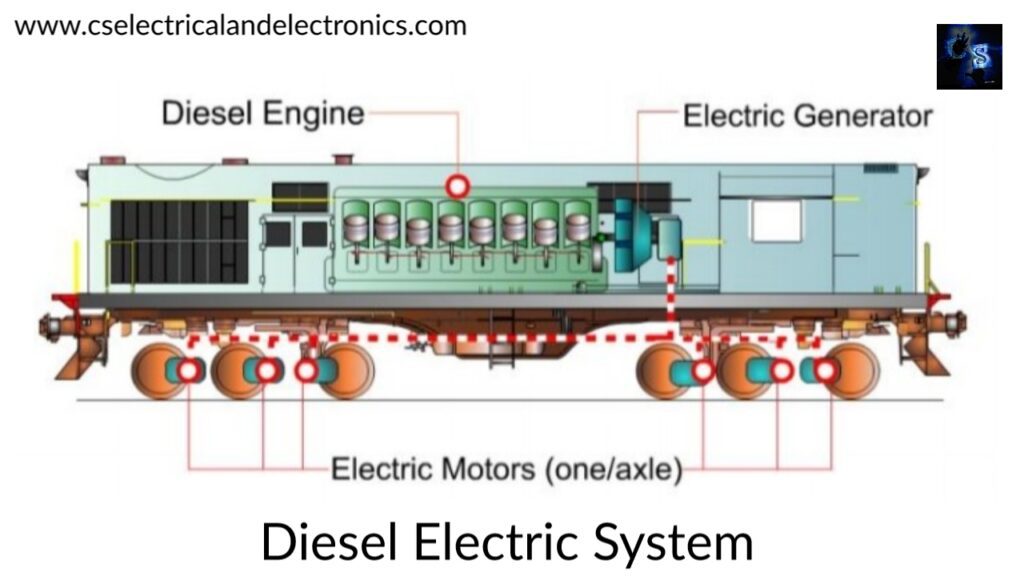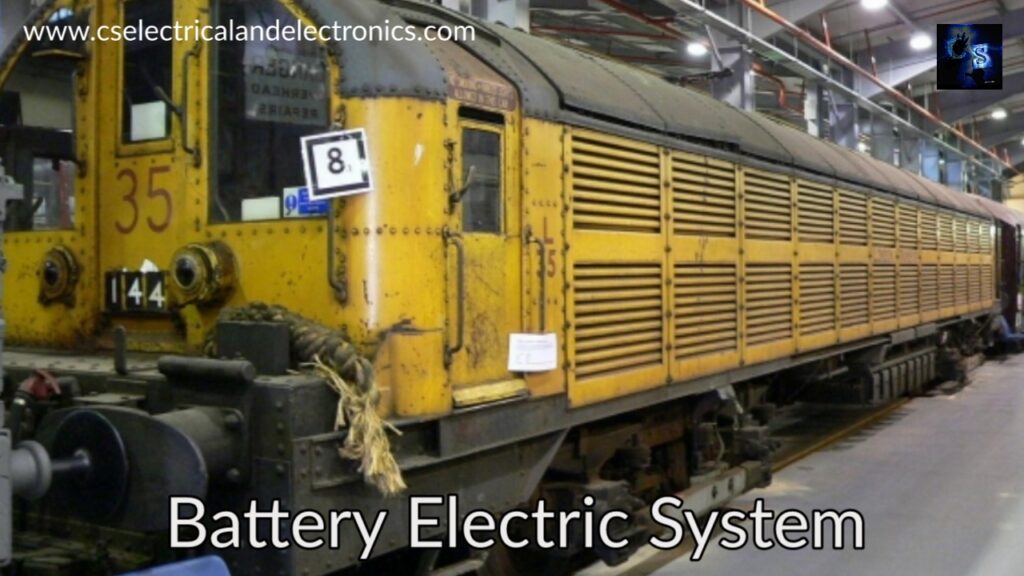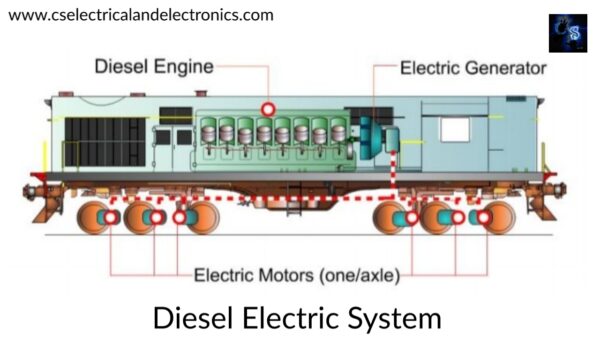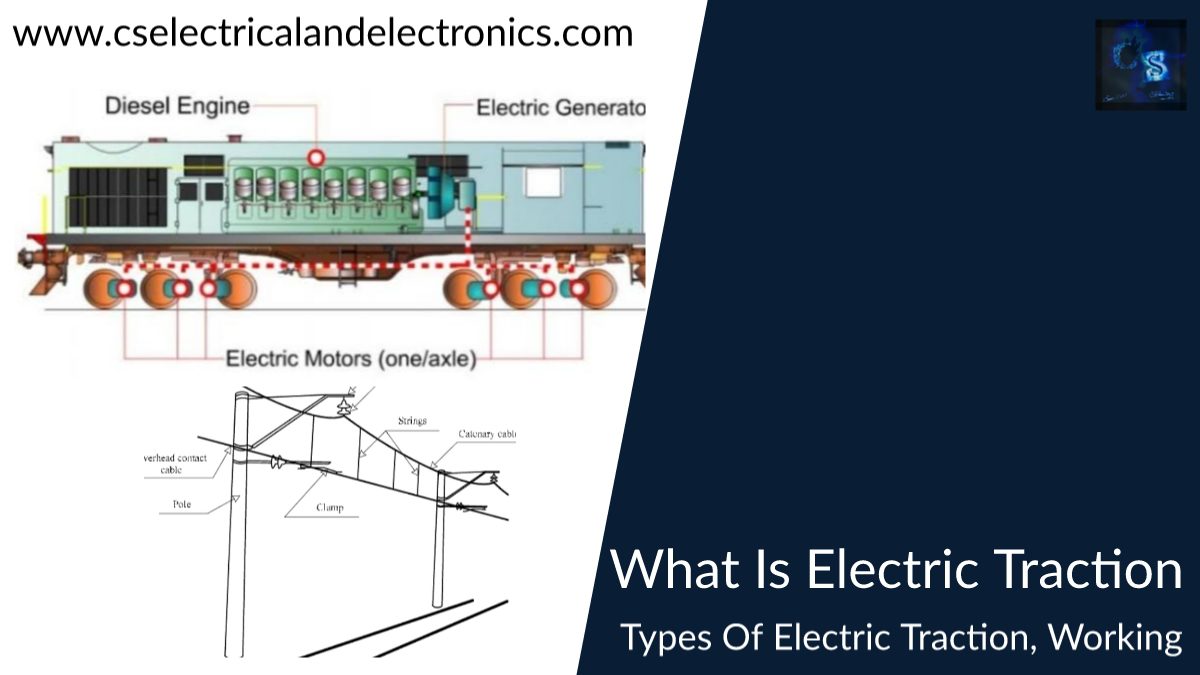What Is Electric Traction, Types Of Electric Traction, Working
Hello guys, welcome back to our blog. In this article, we will discuss what is electric traction, types of electric traction, working, diagrams, and self-contained vehicles, and we will share a detailed explanation of each traction system.
If you have any electrical, electronics, and computer science doubts, then ask questions. You can also catch me on Instagram – CS Electrical & Electronics.
Also, read:
- Types Of Testing Done On Electric Vehicles Before Launching
- Top 10 Electrical Wire Manufacturing Companies In The World
- Top 20 Innovations In The Automotive Industry, Automotive Technologies
What Is Electric Traction
Traction is a process that is used to move any type of vehicle. If this moving process is done with the help of electrical energy it is called Electrical Traction. In Electric traction, the driving force required for locomotion is obtained from electric motors. There are various systems of traction that are commonly classified as two terms from per electrical point of view:
- Electrical Traction
- Non – Electrical Traction
Non-Electrical Traction
The traction process that uses engine drives for driving locomotives other than the electrical drives is called Non – Electrical traction. There are mainly two systems used in Non – Electrical traction: 1) Direct steam engine system and 2) Direct internal combustion (IC) system. This type of traction is not economical and fuel costs are taken into consideration this type of traction generates smoke which causes environmental issues such as air pollution and global warming. Hence as an alternative, electrical drives are used in traction.
Electrical Traction
The traction process uses electrical energy for driving the locomotive then it is called Electrical traction. This Electrical traction is further divided into two groups:
Self Contained vehicles
1) Diesel-Electric system
2) Battery – Electric system
Vehicles that receive power from the distribution network
1) Electric drive (Ex: Trains)
Self-contained Vehicles:
These vehicles generate electric power internally and make the locomotive move. They use Batteries and Diesel (as Generator fuel) for running locomotives.
01. Diesel Electric System
Diesel – Electric system uses diesel as fuel to run the locomotive. A diesel locomotive is similar to a road vehicle in having an internal combustion engine as the main power source. The pep generator is the main part of Diesel – Electric traction system as it drives the locomotive. The EMD engines are used as the main diesel engines which have a minimum of 3000 HP.
There will be a turbocharger at the end of the engine which is used for generating electrical energy. The power generated will be used for control meters in the control cabin and for lighting and air – conditioning in passenger cabins.

Internal combustion engines run at low rpm if they run at high rpm there will be a chance of explosion of the engine, Because of the heavy load on the back of the locomotive. The starting torque will be very less as it runs at low rpm but an electric motor can provide high starting torque at low rpm.
The internal combustion engine will run at 900 rpm and that will be used for generating electricity with the help of a pep generator and which will drive the electric motors. This is how the Diesel – Electric system works. The braking system used is air compression braking in the Diesel – Electric system.
02. Battery – Electric System

Battery – Electric system uses batteries as a source for running the locomotives but the load and the locomotives will be very low. This type of system is rarely used. This type of system is similar to electric vehicles. There will be a set of batteries connected in parallel and they will be charged using external sources.
The energy stored in the batteries will be used to drive the electric motors in the locomotive. This traction will carry less load as it runs on the batteries. This type of traction is mainly used in underground locomotion.
Vehicles that receive power from the distribution network:
01. Electrical Drive System (Electrical Trains)
An electrical is the arrangement of a group of electrical machines which converts electrical energy into mechanical energy in a controlled process. It is popularly called the motion control system of traction using electricity. The electric drives receive the inputs from the motor-controlled center (MCC), where the speed and torque of the motors used in drives are controlled using different inputs.
Coming to the electric drive system in the traction the set of drives is placed all over the cabins, and the over headlines are used as a source for supplying the electricity to the drives.

AC and DC supplies are used for the power supply but the DC supply is more efficient than the ac supply. The main reason for using a DC supply is it provides a constant and uninterrupted supply to drives because of this reason the drives used in traction are DC drives.
The power will be received from the overhead lines with the help of a pantograph and it is given to the short line which supplies the power to the Motor Control Centre (MCC). The drives will run with the control of the MCC. Mainly asynchronous motors are used for driving the locomotive. The electrical drive system has some systems of track electrification.
The systems of track electrification are as follows:
01. Direct current. 600 V DC for tramways and 1500 or 3000 V DC for mainline railways.
02. Single-phase AC system. 15/16 KV at 50/3 or 25 Hz. This of course varies for different countries.
03. Single-phase AC system. A high voltage three-phase system. Here two wires are generally used, and the track rails are used for the third phase.
This is how the electrical drive system is used in the electrical traction.
Electrical traction will not produce any smoke or corrosive fumes thus it is most suited for underground and tube railways. The efficiency of the electrical traction is very high and the upgrades in the traction provided us with the metro trains and bullet trains.
The process of supply may change but the traction will work by considering the source as electric traction. Electrical traction is the cleanest form of transportation.
This is about “What Is Electric Traction“. I hope this article may help you all a lot. Thank you for reading.
Also, read:
- 10 Tips To Maintain Battery For Long Life, Battery Maintainance
- 10 Tips To Save Electricity Bills, Save Money By Saving Electricity
- 100 (AI) Artificial Intelligence Applications In The Automotive Industry
- 100 + Electrical Engineering Projects For Students, Engineers
- 1000+ Automotive Interview Questions With Answers
- 1000+ Control System Quiz, Top MCQ On Control System
- 1000+ Electrical Machines Quiz, Top MCQs On Electrical Machines
- 1000+ MATLAB Simulink Projects For MTech, Engineering Students

